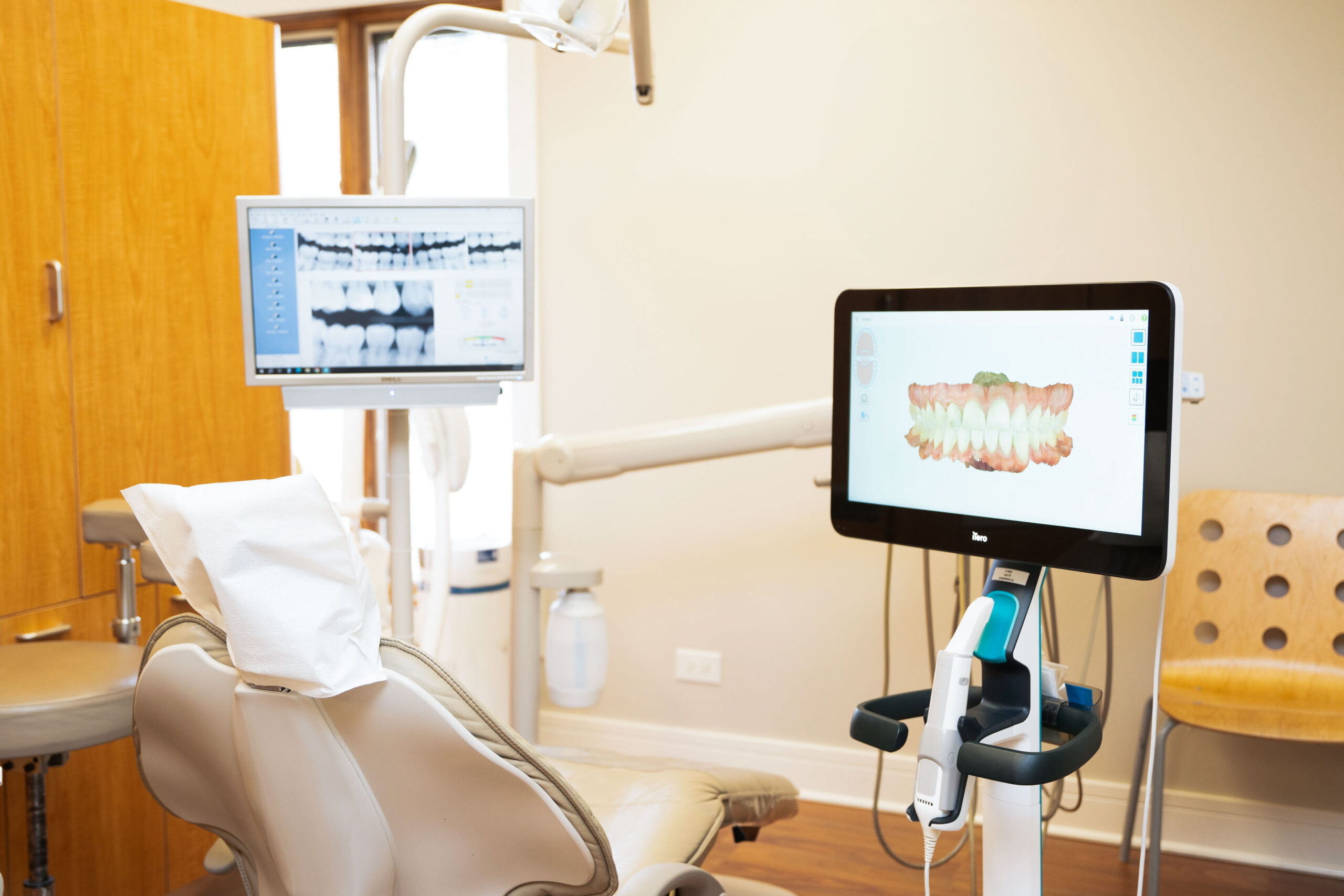
One of the most important benefits of TRIOS® and intraoral scanners in general, is improving the patient experience. There is no more need to take tooth impressions with gooey material. It’s not fun. 7.5% of patients almost-always gag when they visit a dentist. Because of that, people are afraid to go to the dentist. Taking digital impressions is more comfortable for patients. The accuracy of digital impressions and the resulting crowns means a much better fitting restoration. The accuracy also cuts down on the need for remakes. So patient-visits are quicker and they don’t have to come back for adjustments.
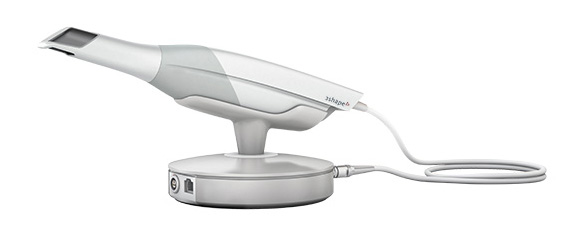
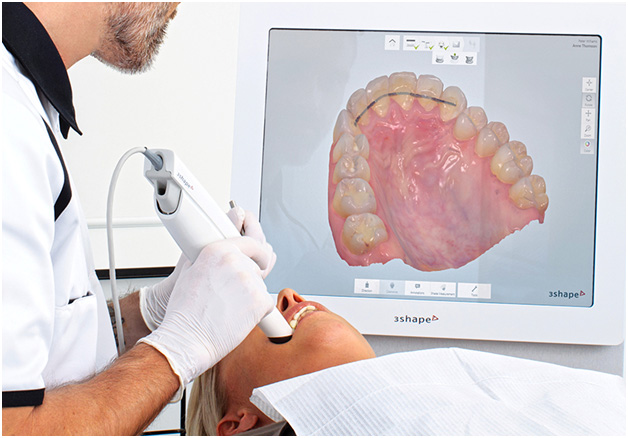
Scanning with Trios 3D
Cone beam computer tomography uses low dose radiation to produce a three dimensional image of the mandible and maxilla. The information provided in this image has various clinical applications including dental implant planning, visualization of abnormal teeth, evaluation of the jaws, evaluation of teeth that need a root canal. This is a safe non-invasive way of answering a number of clinical question.
The operating microscope uses magnificationto to 25 times that of the naked eye. This is a helpful tool in both diagnosing and performing root canal treatment. Using a microscope gives us the opportunity to provide superior treatment with better outcomes.
Schick Digital Dental X – Ray Sensor produces superior image quality and has features like zoom, contrast, measure, colorize and more. These features make diagnosis easier and more precise. The most important aspect of digital x-ray sensors is a 90% decrease in radiation and greater patient satisfaction.
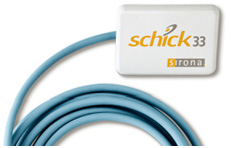

X-ray image quality
There are many uses for the soft tissue diode laser. When treating patients with periodontal disease, the laser probe can be introduced into the pocket and provide a bactericidal and detoxifying effect. In daily practice, soft tissue diode laser is ideal as a simultaneous cutting and coagulating instrument. It removes extra soft tissue to make crowns look better or to make uneven gum-line look straight and aesthetically pleasing. In all cases the dentist is able to provide treatment with less trauma, increased healing, and faster patient recovery.
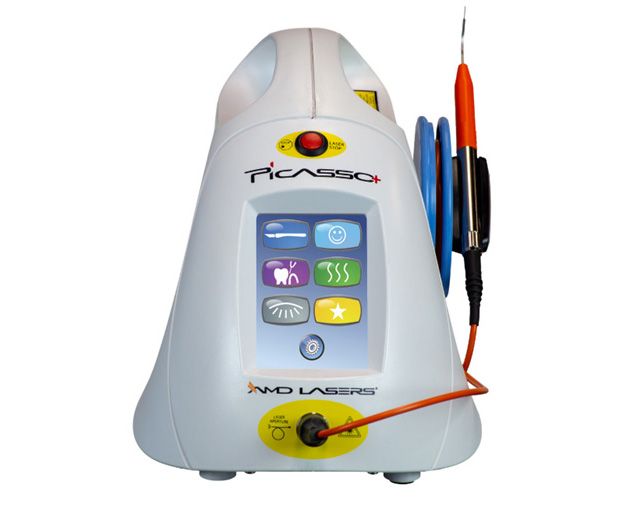
Picasso Plus Dental Laser
Air polishing is a procedure which uses air & water pressure to deliver a stream of specially processed powders in a slurry through the handpiece nozzle. Fine particles of powders are propelled by compressed air in a warm spray and directed onto the surfaces of the teeth. This pressurized jet of air, water and powder removes surface stains, plaque and other soft deposits such as food particles trapped in between the teeth.
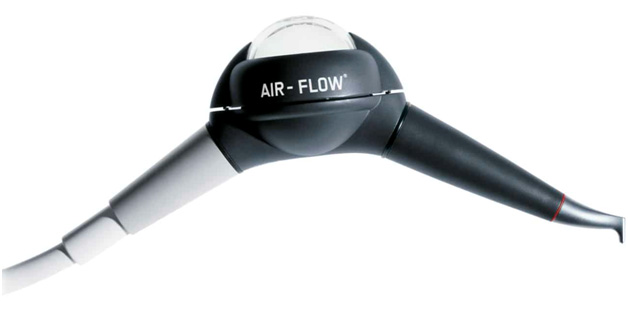
Air polishing nozzle
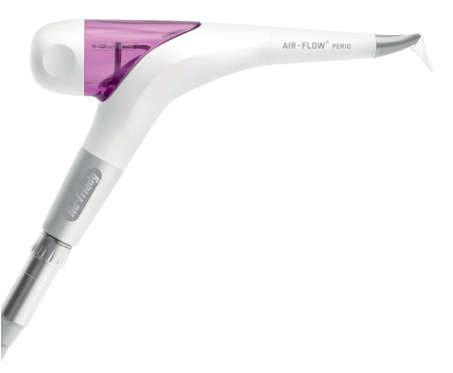
Air-Flow Handy 3.0 Handheld PERIO Air Polishing Device
ZOOM™ is a bleaching process used to lighten discoloration of enamel and dentin. The ZOOM™ in-office tooth whitening procedure uses the ZOOM™ Advanced Power Chairside Lamp – to accelerate the bleaching process – to activate the 25 percent hydrogen peroxide whitening. Unlike home-use systems that incorporate low-dose bleaching agents, in-office whitening takes place under carefully monitored conditions which allow for the safe, controlled use of a relatively high concentration of bleaching gel – yielding results that are visible within 45 min procedure.
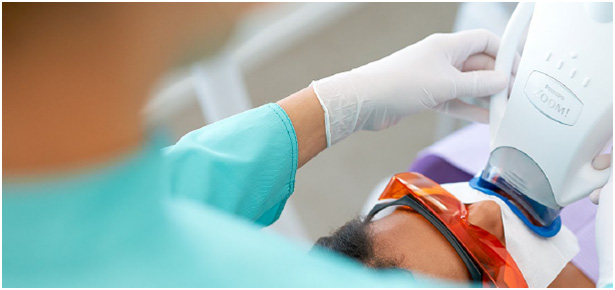
ZOOM™ whitening
Intraoral cameras (IOCs) are cameras used by dentists or doctors to show a patient the interior of their mouth, as an alternative to using a mirror. They are now widely used in dental offices, allowing patient to see a clear picture of the inside of their mouth, aiding the dentist in consulting with them on various treatment options. Images can be saved to a patient’s file for future reference.

Intraoral camera